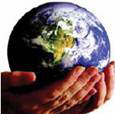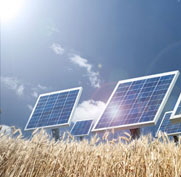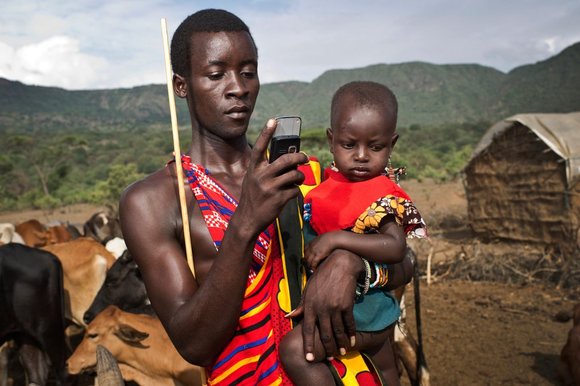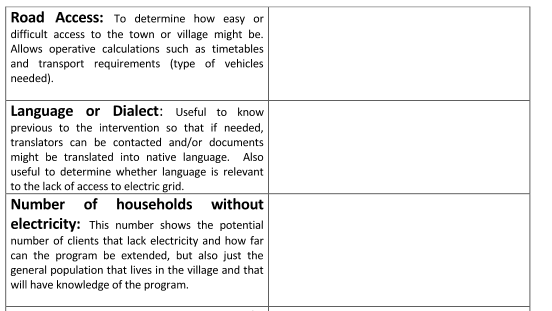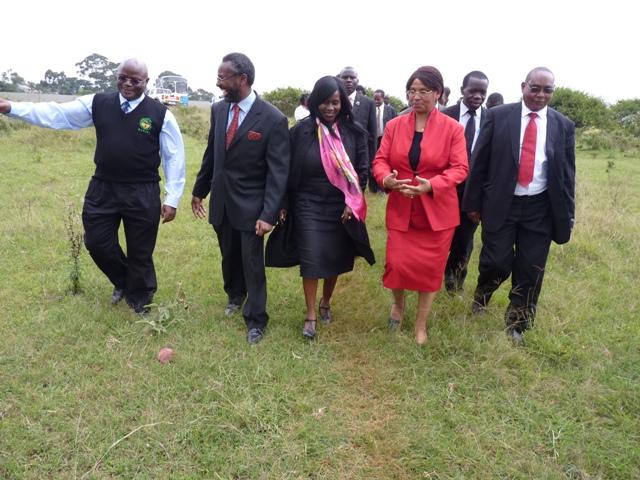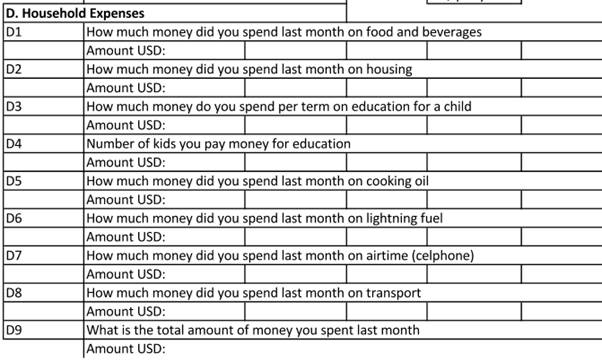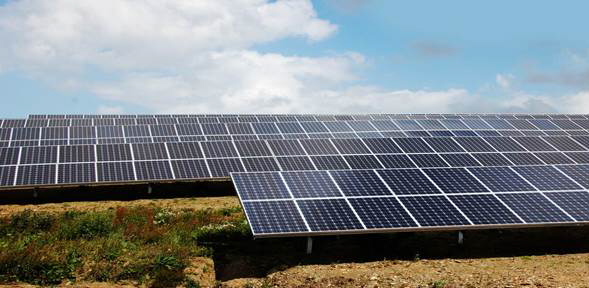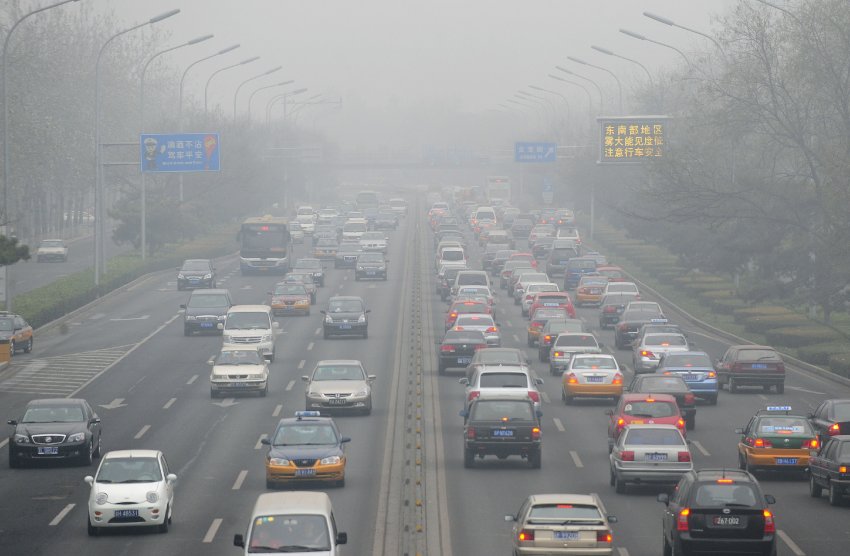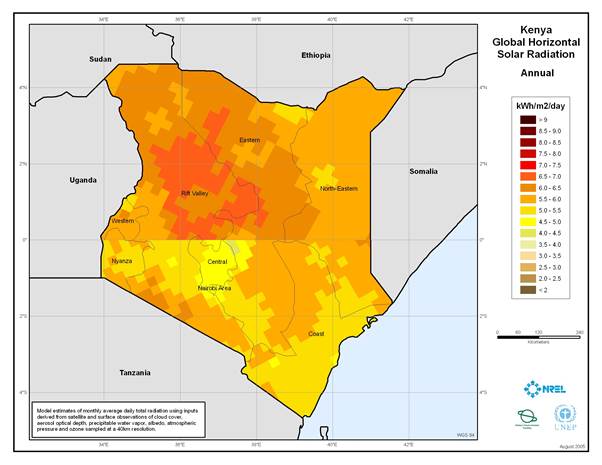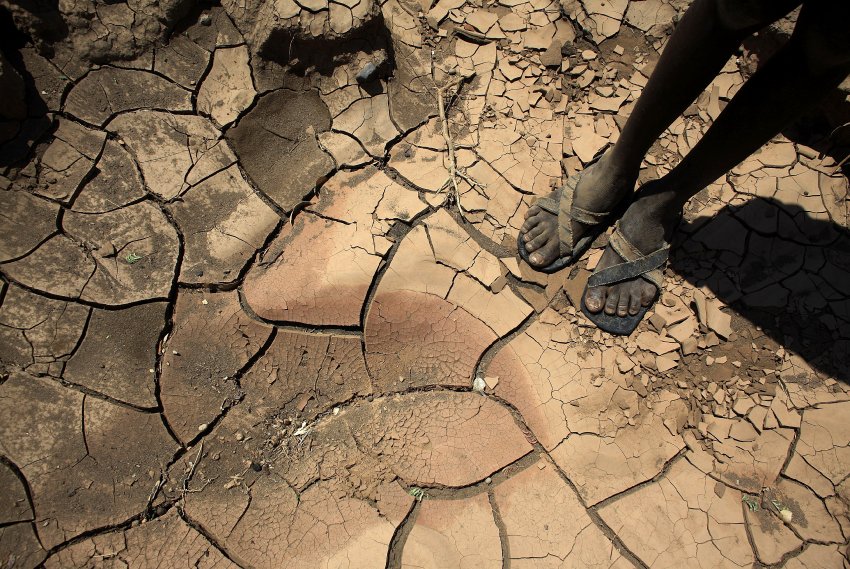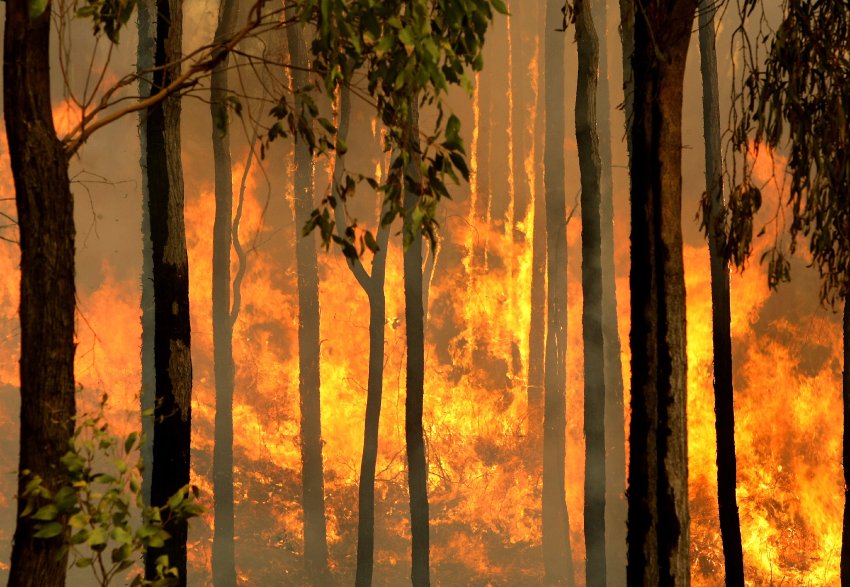|
Now drought and desperation are again afflicting Kenya and the Horn of Africa. 750,000 people – half of them children – could starve to death by December, projects the United Nations.
Scientists have long predicted that Africa will suffer first and worst from the heat and drought that climate change unleashes. Of course, climate change isn’t the only reason Africans are starving. Somalia, epicenter of the famine, is also plagued by civil war and dysfunctional government.
But this famine was brought to a head by the worst drought in six decades, a drought bringing hunger to neighboring Kenya and Ethiopia, two relatively peaceful, stable countries.
Americans haven’t heard much about this famine, but it deserves our attention, and not solely for altruistic reasons. For climate change is already hurting food production here at home.
In Texas, the state climatologist calls 2011′s weather perhaps “the worst drought on record for agriculture,” with West Texas now resembling that hell-hot desolation I once witnessed in Kenya.
What’s more, climate change is bound to get worse. The inertia of the climate system insures that temperatures will rise and extreme weather intensify for decades to come.
That spells trouble for farming everywhere. Corn doesn’t reproduce at temperatures above 95 degrees Fahrenheit. By 2040, Iowa will likely suffer three straight days of 95 degree heat in three years out of four.
Africa, meanwhile, will get even hotter and drier. “By 2020, one of every two growing seasons in sub-Saharan Africa will be hotter than any in the last 50 years,” concludes a study by Stanford University’s David Lobell.
For now, people in the Horn of Africa need emergency food aid. But only long-term responses will keep Africans from falling into such difficulties again.
Don’t believe cynics who say Africa is hopeless and foreign aid always mistaken. There are dozens of agricultural success stories across the continent that only need to be scaled up to improve African food security and climate resilience – lessons that can also benefit American farmers.

Many of these success stories rely, unexpectedly, on trees. Land degradation and poor soils are basic causes of Africa’s low food production. Growing trees amid farm fields – so-called “inter-cropping” – counters these problems. Trees retain soil moisture, provide mulch (with fallen leaves), limit erosion, add coolness, and more.
Dubbed “Evergreen Agriculture” by the World Agroforestry Center, this approach is doubling crop yields in parts of Niger, Burkina Faso, Zambia and Malawi. And it’s cheap: famers can grow trees by themselves.
It’s in our interest to encourage such solutions. Not only because it is morally right, but because lessons learned in Africa – one of the first places climate extremes are being felt – can teach our own farmers how to cope with climate change tomorrow.
That’s why it’s essential to reject calls on Capitol Hill to end foreign aid. Foreign aid accounts for only one percent of the federal budget (not the 25 percent most Americans think it does).
Cutting aid will not cure our deficit, but it will deprive hungry people of the help they need to help themselves.
If you wonder why you should pay for such efforts, think back to that shepherd boy in Kenya. Remember, in the new era of climate change, you too may need help someday.
{Independent journalist Mark Hertsgaard has authored six books, including his latest, “HOT: Living Through the Next Fifty Years on Earth.” Visit: www.markhertsgaard.com © 2011 www.blueridgepress.com}
Copyright Environment News Service (ENS) 2011. All rights reserved.
ENS Related Reports:
ANALYSIS
Climate Change in Africa
Photo by Marc Engelhardt
By Barbara Unmüßig and Stefan Cramer
by Barbara Unmüßig and Stefan Cramer

Download complete paper (pdf, 6 pages, 486 KB)
(first published in GIGA Focus Afrika Edition 02/2008)
At the UN Climate Change Conference in December 2007 in Bali, a new phase in the international climate negotiations was initiated. African countries will now be excluded from all commitments to emission reduction. They expect massive international financial transfers from further negotiations in order to be able to adapt to the severe impacts of climate change.
1. Africa’s Contribution to Climate Change
The African people and African ecosystems with their unique biodiversity will be the major victims of global climate change. At the same time, no significant contribution by Africa to global warming can be established: less than three percent of the world’s total emissions of greenhouse gases emanate from the African continent. This does not even correspond to its low share in the global gross national product.
1.1 Technical Emissions
Africa’s contribution to climate change from fossil energy and transport sources in the global context is only worth a footnote:
· Africa’s CO2 emissions, predominantly from the energy and transport industries, amount to approximately 650 million tons per annum – even less than Germany, which emits approximately 800 tons of CO2. The main sources are power generation from coal in South Africa (approx. 350 million tons) and gas flaring in the Niger Delta (approx. 100 million tons).
· The annual per capita emissions of CO2 in sub-Saharan Africa (2004) are put at approximately one ton (UNDP 2007). As a comparison, in Germany alone the number is approximately ten times as high.
· These CO2 emissions are, however, unequally distributed. The largest share (approx. 95 percent) of Africa’s total CO2 emissions emanates from only 15 countries, which emit over 10 million tons respectively. Among them are the OPEC members Nigeria and Angola, as well as the primarily agrarian economies of Ethiopia, Ghana, and the Ivory Coast.
· The majority of African countries emit only minimal quantities of 0.1-0.3 tons of CO2 per inhabitant.
The low CO2 emissions from technical sources are a direct result of Africa’s low level of industrial development. Therefore, no meaningful CO2 reduction or energy efficiency targets can be formulated here.The only exceptions are the termination of gas flaring in Nigeria and Angola, as well as the reorientation of power generation in South Africa to energy sources which emit less CO2 than coal.
1.2 Emissions Resulting from Deforestation
The small amount of CO2 emissions from technical sources contrasts with the larger net emissions of CO2 which result from rapid deforestation. This is true for the twelve densely wooded countries of equatorial Africa, whose corresponding annual (2005) emissions are estimated at approximately 1.1 billion tons (FAO 2007; UNDP 2007). The stock of CO2 stored by African forests amounts to approximately 60 billion tons, about as much as that of all OECD countries put together, including densely wooded members such as Russia and the US. A higher quantity of CO2 is only stored in the forests of the Amazon Basin.
According to the Food and Agriculture Organization (FAO), Africa’s forests shrink at the alarming rate of approximately one percent per annum (FAO 2007). Other studies assume rapid economic overexploitation and the quick thinning of forests for firewood (Achard et al. 2002). The biomass stored in the forests is decreasing – and thus the emissions of CO2 from forests are increasing – a disastrous development for both Africa and the global climate.
At the climate change conference in Bali, the issues of deforestation and forest conservation came back onto the agenda of international climate policy. The world has now realized that a coherent climate strategy is impossible without an end to global deforestation. Rain forests are on the one hand a huge storehouse for atmospheric carbon. On the other hand, deforestation sets free huge quantities of CO2. With proper protection of the African forests, the continents’ emissions would be compensated for many times over and, additionally, an important contribution to the fixation of carbon in forests at the global level would be made.
2. Effects of Climate Change
In the latest report of the IPCC, the chapter on Africa asserts that in the last few years many connections between climate variability and climate change have been discovered. Notwithstanding these discoveries, there is still an urgent need for research in order to better understand the complex interrelations between climate change and Africa’s landuse systems, food security, health, and ecosystems (Boko et al. 2007).
2.1 Rise in Temperature and Rainfall
The level of information on the consequences of climate change in Africa has however clearly improved in the last couple of years. The latest IPCC report confirms the continuation of the trend which has become visible on the continent for some time now: rising temperatures as well as, depending on the area, increased or decreased rainfall.
Based on a scenario of average emissions, as presented in the IPCC report of 2007, a rise in global average surface temperatures of three or four degrees Celsius compared to the last two decades, 1980-1999, is expected by the period 2080-2099. However, these averages do not shed light on regional differences; the rise in temperature in Africa will probably show regional and seasonal variations:
· In North Africa in particular, summers are expected to be hotter; the winter temperatures, in contrast, will be lower.
· In the Sahel zone one must reckon with a potential rise in temperature of 2.6-5.4 (average 3.6) degrees Celsius (WBGU 2008).
Rainfall projections are, comparatively speaking, less consistent. The average emissions scenario presumes that rainfall along the Mediterranean coast and north of the Sahara will decrease by one fifth by the period 2080-2099 (Boko et al. 2007: 443). Declining rainfall and a rising rate of evaporation due to higher temperatures will probably further aggravate water scarcity during the North African summer.
In contrast, current climate models do not allow for any reliable forecasts of average rainfall for the Sahel zone. The scenarios are contradictory, to the point that some predict further drying out of the region while others predict an increase in humidity and an advancement of vegetation into the Sahara.
The Sahel zone, which has already been hit by reduced rainfall, could increasingly suffer from drought and desertification (WBGU 2008: 147).
For the regions of Southern Africa which lie in the subtropical belt, the projections indicate a clear reduction in precipitation in the winter months (WBGU 2008: 147). Here the precipitation figures could decrease by up to 40 percent during the southern winter (Boko et al. 2007: 443). This is arguably the regional projection with the most dramatic consequences.
The situation in tropical and East Africa is different: here, a seven percent increase in rainfall is anticipated (Boko et al. 2007: 443). Furthermore, the rainfall distribution is highly variable in East Africa. Records show that rainfall has increased in the last century. However, projections up to 2050 indicate differences: in parts of equatorial East Africa rainfall will increase in winter while in summer it will decrease. On the whole, it is to be expected that the intensity and frequency of rainfall will change. High temperatures and less rainfall in the dry months will affect the course of the rivers. The Pangani and Ruvu Rivers in Tanzania will presumably carry six to nine percent and one-tenth, respectively, less water. One of Kenya’s freshwater sources – the Kilimanjaro glacier – has melted away to a large extent already and is expected to have completely disappeared by 2015/20 (WWF 2006: 4).
2.2 Agriculture and Water Scarcity
Whether in the Stern Report (Stern 2006) or in the many other reports on the consequences of climate change in Africa, the negative effects on the availability of water and on agriculture occupy pole positions. Even if African farmers have become used to adjusting to the invariably unpredictable changes in weather, according to the ICCP report (Boko et al. 2007) climate change will cost African farmers more effort in terms of survival strategies than everything demanded from them so far. Thus, a considerable drop in agricultural yields is expected. On the entire continent, arid and semi-arid areas are expected to expand by between five and eight percent by 2080. This corresponds to a loss of approximately 60-90 million hectares of agriculturally productive land (WBGU 2008: 148).
Africa’s agriculture is, moreover, a highly sensitive sector with regard to the climate, because rainfed agriculture is prevalent here. Climate change – according to IPCC projections – will shorten the cultivation phases, and thus more land will drop out of production due to water scarcity.
If land use is constantly restricted as a result of climate change (shift in seasons, water scarcity due to the steady drop in rainfall), this will have negative implications on employment and productivity in the agrarian sector and directly on the lives of a greater part of the African rural population. Approximately 70 percent of the population lives from agriculture, and 40 percent of all African exports derive from agriculture. The IPCC estimates that the decline in production could reach more than 50 percent in some countries by 2020, and that the income from agricultural production could drop by up to 90 percent by 2100. Small-scale farmers will be most affected. The food security of the entire continent will be impaired, and this may lead to increased dependency on food imports.
Projections regarding access to water look dramatic. Even today a quarter of the African population suffers from acute water shortage, meaning that 200 million Africans have access to less than 500 m3 of water per person per annum. The number of people affected by water shortage problems in the future is estimated to reach 75-250 million by 2020 and 350-600 million by the year 2050 (Boko et al. 2007: 444).
Also, the rise in the sea level predicted for Africa threatens human settlements and agricultural lands as well as freshwater reservoirs. A rise of merely 50 centimeters in the level of the Mediterranean Sea could release saltwater nine kilometers into the coastal aquifers (groundwater carrier) of the Nile Delta. Egypt’s utility and drinking water supply is 90 percent dependent on the Nile (WBGU 2008). Moreover, a sea-level increase of one meter would mean a loss of 4,500 km2 of arable land for Egypt; up to six million people would have to be resettled (UNDP 2007: 100).
2.3 Poverty and Health
The most recent UNDP report on human development establishes clearly the connection between climate change and poverty.
The consequences of climate change perpetuate and aggravate already existing injustices. This is particularly true of Africa, where two mutually reinforcing factors – poverty and factual climate change, for example, in the form of drought – collide. African states are without exception the taillights of the Human Development Index (position 156-177) (UNDP 2007).
While farmers in Germany can fall back on insurance in case of crop failure due to drought, people in Africa have to develop other strategies. They will probably reduce consumption, reduce food intake, and withdraw their children from school in order to compensate for the damage. The interplay between environment and development will inevitably end in a crisis. Fighting poverty is linked to strategies for adjusting to climate change.
As a consequence of climate change, it is assumed that diseases such as malaria and Rift Valley fever will spread. Even though it is assumed that malaria pathogens or their carriers will not survive climate change in some regions, other areas will become malaria zones. Even today malaria is spreading into the hitherto malaria-free highlands of Ethiopia, Kenya, Rwanda, and Burundi. It is even likely that malaria will spread into the highlands of Somalia and Angola by the end of the century. By and large, it is anticipated that malaria cases will increase by five to seven percent by 2100 (Boko et al. 2007: 446; WWF 2006).
2.4 Violent Conflicts
Numerous studies indicate that there is a connection between climate change on the one hand and security and violent conflicts on the other (Smith/ Vivekananda 2007; WBGU 2008; Campbell et al. 2007; Boko et al. 2007: 443). Dan Smith and Janani Vivekananda of International Alert have pointed out that climate change could promote violent conflict. With increased scarcity of usable land and water resources, impoverishment will continue. This is particularly predicted for North Africa.
Conflicts around scarce resources (water) and migration (for example, as a result of drought) could become more frequent and could intensify due to climate change. With regard to already smoldering conflicts, the repercussions from climate change – alongside other factors – could have an escalating effect. However, the contribution of this factor in comparison to other factors is difficult to measure.
2.5 Loss of Ecosystems
The African continent still possesses a unique biodiversity – one-fifth of all known mammal, bird, and plant species live there – but it is threatened by climate change. Local deforestation, slash-and-burn agriculture, the conversion of pristine habitats into agricultural areas, pollution, and overfishing of coastal waters are further exacerbating the situation. The warming of the oceans and the rise in the sea level will affect the protective function and the biodiversity of the mangrove forests and the coral reefs. If mangrove forests and coral reefs die, the spawning ground for fish and an essential protection mechanism of the coast – a factor not to be underestimated for tourism – will be lost. The extensive bleaching of coral reefs in the Indian Ocean and in the Red Sea which had occurred by the end of the 1990s has already led to a loss of revenue in the tourism sector. The projections regarding the loss of mammals, particularly along the migratory routes of large herds of wild animals and (migratory) birds, are especially alarming. For Southern Africa it is estimated that the interplay between land use and climate change (particularly desertification) will have serious effects on the survival chances of larger mammals. In the Kruger National Park (South Africa), it is feared that at least two-thirds of the species will be lost (WWF 2006: 9). Apart from genetic losses, additional economic losses in the tourism sector are to be expected.
3. Challenges of African Climate Policy
All African States have ratified the Climate Convention adopted in Rio de Janeiro in 1992 (United Nations Convention on Climate Change – UNFCCC). The same applies to the Kyoto Protocol passed in 1997. But it is only in the last couple of years that African states have organized themselves and that they have begun to confer before and during the UNFCCC annual conferences of the signatory countries.
Initially, African states met under the umbrella of their respective regional groupings, the Economic Community of West African States (ECOWAS) and the Southern African Development Community (SADC). These regional negotiations continue at African Union meetings. Before Bali, 38 African ministers of the environment met for talks in Abuja, Nigeria. The outcome of these deliberations was then introduced into the major negotiation bloc of the developing countries, the Group 77+ China. The G77+ China only speaks on behalf of this group if there is an agreement on these topics.
The African Union (AU) takes up the topic of climate change more frequently. In January 2007 the AU organized a summit on this topic for the first time in its history. At the summit, Nicolas Stern – author of the Stern Report – was invited to give a lecture on the consequences of climate change – to the resentment of the few African climate scientists such as Youba Sokona, head of the Sahara and Sahel Climate Observatory (Tunisia), who works in the IPCC. As a result of Stern’s lecture, Sokona’s speech time was significantly shortened. Sokona criticized the AU for its invitation policy because according to him it reinforces the already existing impression in Africa that climate change is a problem of the North and not of Africa. He also argued that indigenous expertise is being neglected and gets little political response.
In addition to the AU, the New Economic Partnership for Africa’s Development (NEPAD) is also increasingly dealing with climate change. In May 2007, the NEPAD secretariat announced that it is going to present – in conjunction with a consortium of environmental, nature conservation, and economic experts – detailed and region-specific studies containing climate policy proposals for African ministers of the environment.
Within Africa, Nigeria, South Africa, Kenya, and Egypt play leading roles, but even within this small group it becomes evident that the interests differ considerably. Nonetheless, only little is known in concrete terms about the divergences in political interests. Nigeria, for example, is also present at the climate negotiations through OPEC. South Africa, in turn, coordinates its policy with representatives of India and Brazil within the IBSA Group and supports these emerging countries in their campaign against binding reduction commitments in the post-Kyoto regime.
At the same time, South Africa assumes the function of a bridge between industrialized and developing countries – and thereby plays a constructive role in the North-South negotiations on reduction commitments. The first reactions to the latest South African energy crisis – mining has to be reduced by up to 20 percent – indicate that more renewable energy will be employed. However, massive investments in nuclear energy and national coal production are being undertaken.
All African countries agree on the following positions, which were also taken in Bali; their demands of late include:
· Adequate and reliable financial support for their political measures for the adjustment to climate change; that is to say, a high share of the adaptation funds agreed upon in Bali.
· More technology transfer for the mitigation and adaptation to climate change as well as – in conjunction with the G77+ China - the implementation of the principle of collective but differentiated responsibility towards the reduction commitment.
· The right to development as well as global justice and a share in the global environmental space.
As in all global negotiation processes, African governments still have a considerable number of bottlenecks in following the highly complex climate negotiations with sufficient expertise. While the industrialized countries arrive with dozens of experts, African delegations are made up of one to a maximum of ten members (Germany: over 80 persons). This is by far not enough, especially when it comes to maintaining a presence in the numerous working and contact groups.
Even when African governments try to prepare themselves as well as possible, insufficient capacities remain a decisive problem. However, it is evident that governments manifestly do not make sufficient use of the African scientists’ and civil society organizations’ expertise. These two groups have now acquired more knowledge on climate policy than ever before.
4. African Priorities
African countries are not committed to any emission reduction in order to avoid climate change. They are, however, also supposed to draw up so-called greenhouse gas inventories, deliberate on national guidelines for the reduction of climate gases, and take measures to avert the harmful effects of climate change. In the meantime, all African countries (with the exception of Equatorial Guinea) have adopted so-called First National Communications.
How must the new priorities for a comprehensive climate policy for African countries look? What role can international development policy play?
4.1 Avoidance of Greenhouse Gas Emissions
For continued economic development, Africa needs to expand its energy demand and thus will necessarily have to increase its CO2 emissions. Very few studies deal with Africa’s anticipated energy consumption in relation to climate change (Boko et al. 2007: 446). Considering present economic growth rates of an average of 5 percent and considering the need to catch up in the energy and transport sectors, even a two-digit rate of increase in CO2 emissions is not unrealistic.
To attain sustainable economic growth and to reach the Millennium Development Goals (MDGs), the potential of renewable energy (wind, water, the sun, geothermics) could also be better exploited in Africa through appropriate investments. This would be an economically interesting option, especially for the oil-importing countries of Africa, given the steady rise in oil prices on the world market. The donor community is also being asked to invest in a climate compatible future.
4.2 Forest Policy
In Bali developing countries approved a self-commitment to prepare verifiable progress reports, particularly in forest policy. A coherent, cross-border forest policy in Africa could make an important contribution towards avoiding global warming. This should be in harmony with the goal of social acceptability, biodiversity, and user orientation. To what extent the affected African countries will be assisted in terms of technical and financial support has not yet been negotiated. This will of course play a central role in the “Bali Roadmap”. Various financial models – new multilateral funds, the inclusion of forests in the global carbon market (emission trade), as well as contributions and taxes – are being discussed.
In Bali it was further decided not to wait for more rounds of agreements, but rather to develop a foundation of data for a rational forest policy through various early interventions. Today, not a single African country can claim to have a coherent forest policy, a real-time monitoring system (as in Brazil), or even the capacities to implement such policies. For example, the Federal Republic of Germany supports the cross-border “Congo Basin Forest Partnership” in which a common and sustainable forest policy for the six countries sharing the Congo River basin is being developed.
4.3 Adaptation to Climate Change
From an African point of view, the establishment of the Adaptation Fund, which was set up in Bali, was an important event. Modern and efficient flood protection represents perhaps the most important contribution to Africa’s adjustment to climate change.
More and more people live in areas threatened by floods. Even today, flooding, land erosion, and the destruction of agricultural and residential areas are the order of the day. The present flood disaster in Zambia and the repeated floods in Mozambique, which threaten the lives of millions of people, are only one indication.
In flood prevention, cross-border water management is of utmost importance. The whole repertoire of preventive flood protection (environmental planning, land-use planning, reforestation, erosion prevention, building of dams, etc.) is required. The cross-border authorities responsible for the environmental administration of the large river systems of Africa (Senegal, Niger, Nile, Limpopo, Zambezi, etc.) have had limited success so far. The Southern African Development Community (SADC), for example, could play a key role in regional water management in Southern Africa.
Future negotiations will concentrate mainly on the question of whether the developed countries are ready to provide a substantial amount of funds for measures towards the mitigation of and adaptation to climate change. This will be the key issue in the post-Kyoto negotiations. On the other hand, there is the question of whether African governments are willing to make use of these new and additional funds effectively and transparently for the purpose they are meant for. Presently, there is hardly any African country which has a sufficiently transparent budgetary system; adequate checks and balances; and institutional capacities for fair commissioning, effective project monitoring, and traceable accountability.
The US$500 million grant approved in Bali for developing countries from the year 2012 onward is only the beginning. In reality, the estimates are of a different order of magnitude. If adaptation to climate change is to form part of a new and additional component of the MDGs, an additional amount of roughly US$86 billion will be needed by 2015 (UNDP 2007: 19f.). Additionally, forest conservation needs to be financed (see above).
There is a great deal of skepticism among African governments about whether the words of Bali will be followed by action. Yet there is already a model that could be adapted to future climate negotiations with Africa: the African Peer Review Mechanism (APRM). This (in principle) participatory and (predominantly) transparent monitoring instrument for good governance in Africa could be easily extended to the introduction of laws relevant to the climate, to climate-friendly economic and financial policies, to compliance with climate protection agreements, and to the effective implementation of climate adaptation programs. The APRM facilitates structured dialogue between all parts of the society. A successful “Climate APRM” would then be honored with an additional transfer of funds, improved technology transfer, and more efforts towards capacity development in Africa. Regarding its “self-evaluating” effect in Africa, the normal APRM, however, is still contested (Grimm/ Nawrath 2007), and climate protection criteria must not be allowed to water down democracy-related criteria.
The Authors
Barbara Unmüßig, Board Chair, Heinrich Böll Foundation, Berlin.
Stefan Cramer, former Head of Country Office, Heinrich Böll Foundation Nigeria, Lagos.
Assistance: Sakhile Koketso, Sustainable Development Programme Manager, Heinrich Böll Foundation Southern Africa, Cape Town.
|
